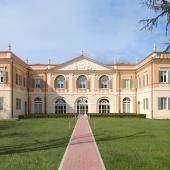The construction industry in North Africa: Egypt

In Egypt the situation appears to have returned to normal following the presidential elections in May 2014. In October, the credit rating agency Moody's changed the rating for Egyptian government bonds from negative to stable.
Already last year the country saw a recovery in private consumption (+4.9% in the third quarter of 2014) and in public spending (+8.8%), as well as fresh growth in exports (+15%), while GDP marked up 6.8% growth in the third quarter compared to the 2.1% average for 2013.
The country now hopes to return to faster growth rates following the recovery of trade and foreign direct investments.
In spite of the unrest in 2011, a total of 22 billion euros of direct investments were made in Egypt between 2009 and 2013 (including 3.7 billion euros from Italy). As part of its efforts to boost the economy, the Egyptian government is intending to launch a major investment programme to attract foreign capital, mainly from Saudi Arabia, Kuwait, UAE and Russia. One of the key sectors in which the government intends
to invest is that of large infrastructure projects. Of the 15 planned mega-projects (with a total value of $100 billion), the largest is the Suez Canal regional development project. Work to widen the canal itself has already begun, while the project will also include the construction of ports, industrial areas and logistic centres along the entire length of the canal with the aim of making it not just a transit point but a major hub of world trade.
Significant investments are also planned in the residential building sector with the construction of a million housing units for the medium- and low-income segments of the population over the next five years, financed both by the Egyptian Central Bank and by investors from the Gulf region. The first phase of the programme involves the construction of 120,000 homes, which will be completed by 2017 at a cost of $40 million. The government expects the entire programme to be completed by 2020 and to extend over a built area of 160 million sq.m.
Major investments are also planned in the energy sector, especially in the Mediterranean coast area. A total of 17 projects are also underway with the dual aim of increasing domestic production and attaining 20% green energy production by 2020, a goal for which a billion euros has been allocated.
The building activity in major cities will mainly involve the construction of shopping centres, museums and hospitals. In Cairo, for example, a large 165,000 sq.m shopping centre called Mall of Egypt is under construction and a project has been announced to build a multifunctional centre (leisure, education, medical services) near the international airport.
The most important project in the healthcare sector will be the construction of the Egyptian American Medical Centre, an advanced multidisciplinary oncology centre with a floor space of 38,000 sq.m on five floors and involving an investment of $90 million.
Back to intro | Morocco | Egypt | Algeria | Tunisia | Lybia
Did you find this article useful?
Join the CWW community to receive the most important news from the global ceramic industry every two weeks





















